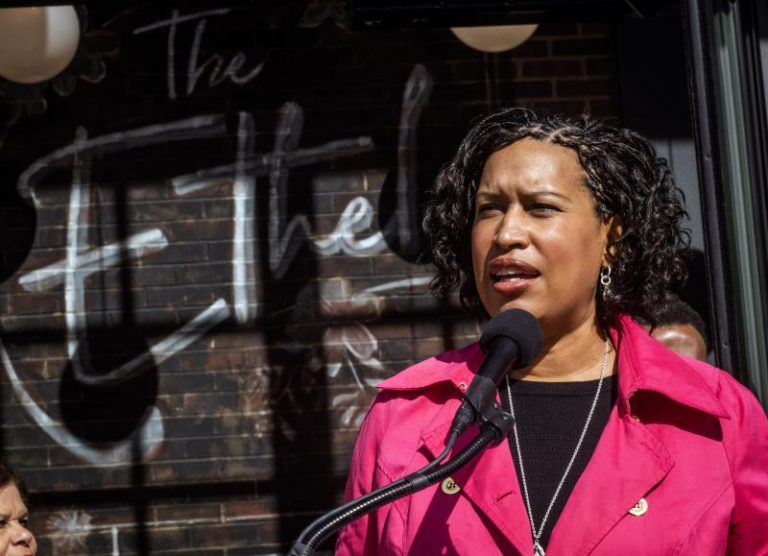If you want to rile up federal employees, have them listen to the words of Rep. James Comer (R-Ky.). “The federal workforce needs to get back to work. Federal agencies are falling short of their missions. They are not carrying out their duties. They are failing the American people,” the House Oversight and Accountability Committee chairman said earlier this month before his legislation restricting federal employee telework passed the House.
Its forced awkward name, “Stopping Home Office Work’s Unproductive Problems Act,” produces a useful acronym, “SHOW UP,” for House Republicans who approved the bill with only three Democratic votes. Just one Republican said no. It will have a tougher time in the Senate controlled by Democrats.
The bill would “reinstate and apply the telework policies, practices, and levels of the agency” in effect on Dec. 31, 2019. That was before many offices closed for the coronavirus pandemic in March 2020 and teleworking greatly increased.
“I am just really annoyed at the terminology ‘come back,’” Everett Kelley, the president of the American Federation of Government Employees, said to reporters during the union’s legislative conference this week. “Those employees that are on telework have been working all along.”
On Thursday, he said through a spokesperson that the bill’s title “is as misleading as it is insulting because federal employees, whether they worked from home or reported to their regular duty stations at VA hospitals and clinics, at federal prisons, at airports, defense installations, or on rescue missions, never stopped showing up throughout the pandemic and did so heroically.”
But while Kelley’s anger toward this and other Republican federal employee efforts is common, his frustration with a Democratic ally is not. Yet that is the situation with Democratic D.C. Mayor Muriel E. Bowser, who also urges a return of federal employees to help revitalize a downtown suffering from the absence of many people now working from home.
Noting “the federal government represents one-quarter of D.C.’s pre-pandemic jobs and owns or leases one-third of D.C.’s office space,” Bowser said in her third inaugural address in January that “we need decisive action by the White House to either get most federal workers back to the office most of the time or to realign their vast property holdings for use by the local government, by nonprofits, by businesses and by any user willing to revitalize it.”
She echoed President Biden, whose 2022 State of the Union address said “it is time for America to get back to work and fill our great downtowns again with people. People working from home can feel safe and begin to return to their offices. We are doing that here in the federal government. The vast majority of federal workers will once again work in person.”
Bowser wants a government-wide “policy which aligns with what the president said,” explained John Falcicchio, D.C. deputy mayor for planning and economic development, in a telephone interview. “That has not come to fruition.” He would not specifically state Bowser’s position on the Show Up Act, but said she believes the policy should be implemented by the president.
Falcicchio said city and federal officials have worked successfully to repurpose federal properties for commercial, local government and nonprofit use, citing the massive redevelopment of the former Walter Reed Army Medical Center site in Northwest Washington among other plans. He wants similar action with downtown offices, though some of those are smaller, scattered sites.
Kelley, in an emailed statement replying to Bowser, said she “needs to understand” that federal employees “don’t have an obligation, as federal workers, to provide downtown businesses with customers.” But Kelley also did not endorse a government-wide telework program, saying “there shouldn’t be a one-size-fits-all policy on all agencies.” American Federation of Government Employees, the largest federal union, endorsed Bowser and has a good working relationship with the mayor, who spoke at its legislative conference.
Meanwhile, the Biden administration is evaluating its space needs in an environment influenced by successful teleworking operations. “Agencies should also consider broader workforce and workplace trends, lessons learned from agency operations during the COVID-19 pandemic, and the need for the Federal Government to be competitive for top talent as employers in the broader labor market,” Shalanda Young, director of the Office of Management and Budget, said in a July memo to agency heads.
She told them to “consider the agency’s mission and customer needs, the current and future workforce, and impacts on local communities.” The last point is one Bowser emphasizes. Agency capital plans were due to the Office of Management and Budget and the Federal Real Property Council in December.
Most federal employees did not telework even during the scariest days of the pandemic, although there was a big increase. In fiscal 2021, which began Oct. 1, 2020, about six months into the pandemic, 47 percent of feds nationwide were eligible “for routine or situational telework” and 94 percent of that group did so, according to the latest federal government teleworking report. Further, 77 percent of eligible employees teleworked on a situational basis and 62 percent of those eligible did it three days a week or more.
The 2021 numbers were a huge jump from two years earlier, when 22 percent were eligible and 56 percent of them teleworked, at least sporadically. Despite differences on telework policies, the relationship between American Federation of Government Employees and Bowser remains strong, while each continue to push their points.
After Bowser spoke to union members on Sunday, Kelley told them that he is looking forward to working with the mayor to make Washington “an example for the rest of the country” and show that “you can have the benefits of permanent remote and hybrid work arrangements, and a vibrant downtown, by adopting a visionary approach to housing.”

